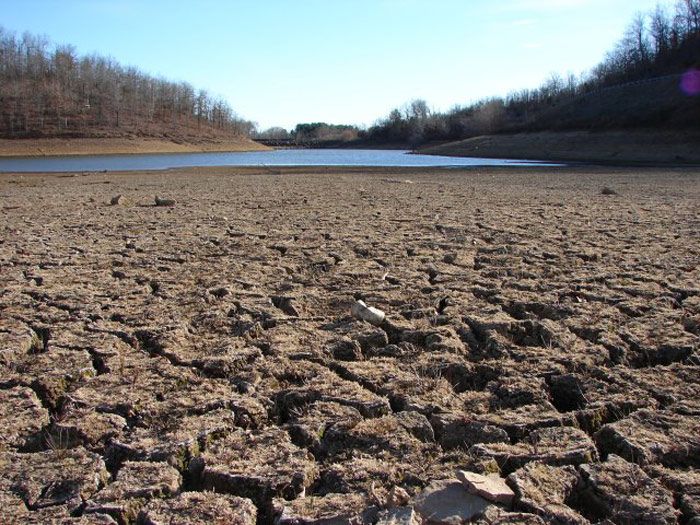Why Rain Doesn't Signal the End of a Drought
Published on by Jake B in Academic
It can take years for a tropical forest to return to its previous levels of photosynthesis and growth, and, as the frequency and severity of droughts increases, they may soon outpace the region's ability to recover entirely.
By KATE WHEELING

California Drought Dry Riverbed, Source: Wikimedia Commons
After several years of debilitating drought, California experienced this year its wettest winter on record. Water returned to California's rivers and reservoirs, the Sierra Nevadas were buried beneath a near-record snowpack, and Governor Jerry Brown lifted the drought emergency across the majority of the state.
But while the drought may have ended, recovery has likely just begun for the state's ecosystems. A new study, published today in Nature , is one of the first to zero in on the factors that determine how long it takes for an ecosystem to return to pre-drought levels of photosynthesis and growth.
"When we think about drought impacts on ecosystems or on forests, we tend to stop paying attention once the rainfall returns to normal, once the drought from a climate perspective is done," says William Anderegg, an assistant professor at the University of Utah and an author on the study. "We hadn't really zoomed in on the recovery period as a key piece of an ecosystem's resilience to changes in climate."
To fill in this gap, Anderegg and his colleagues used data collected from satellites and land-based observation sites to estimate photosynthesis rates around the globe and find out which ecosystems recovered faster after droughts. They also wanted to pinpoint which factors controlled the pace of recovery.
The team found that temperature and precipitation had a large effect on recovery times. Wetter conditions, like those that followed California's most recent drought, sped up recovery, while both hot or cold temperature extremes slowed recovery down.
Read full article: Pacific Standard
Media
Taxonomy
- Environmental Health
- Ecosystem Management
- Environment
- Ecosystem Management
- Drought
- Rain Water Management